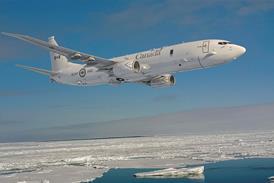As programme cost estimates come under new scrutiny, parts of the Lockheed Martin F-35 Joint Strike Fighter programme will be delayed a further one to five months under a new manufacturing schedule to be unveiled in May.
The update to the F-35 master production schedule - dubbed 6.1 - preserves the first flight date in late May for BF-1, the first short-takeoff-vertical-landing aircraft.
The revised plan is also intended to leave long-term production and operational in-service dates for JSF intact.
But meeting those objectives comes at a cost for the programme. Manufacturing periods for other aircraft during the development phase will be pushed back, as the overall workplan is resequenced.
"We have chosen to add some more conservatism [in the schedule] based on some of the initial issues on wing critical path and also our suppliers capabilities," Dan Crowley, Lockheed executive vice-president and general manager, told Flight International.
Releasing the 6.1 plan in two months will mark Lockheed's third major schedule update for the six-year-old programme and the first since a major mid-course programme review in November 2006.
Crowley, however, disputes a new list of manufacturing schedule challenges facing the programme. The US Government Accountability Office has released a new report describing "continuing critical part shortages, high change traffic, out-of-station work, quality issues and planning rework". Crowley says supply shortfalls are limited to 2% of the JSF parts inventory, with the most critical shortage involving tubing for the pneumatic and hydraulic systems. Lockheed has responded to this problem by increasing supplier capacity and by starting to produce some of the tubing in-house.
Composite skins and unique connectors also remain watch items, while other parts - such as the landing gear and avionics systems - have arrived on schedule.
The GAO reports wide variances during the manufacturing phase of the first several aircraft, but Crowley says production work is starting to more closely align with expectations.
"We are seeing stability in our build trends," he says, adding the company has added 500 mechanics this year to the assembly line in Fort Worth.
Meanwhile, the GAO also reports the US programme's $299.8 billion price tag is not a reliable figure, and that estimated costs may jump to $337 billion over the life of the programme.
In April, selected acquisition reports issued by the US Department of Defense will show a more modest cost increase of about 3.5%, or roughly $10.5 billion, according to sources.
Source: Flight International























